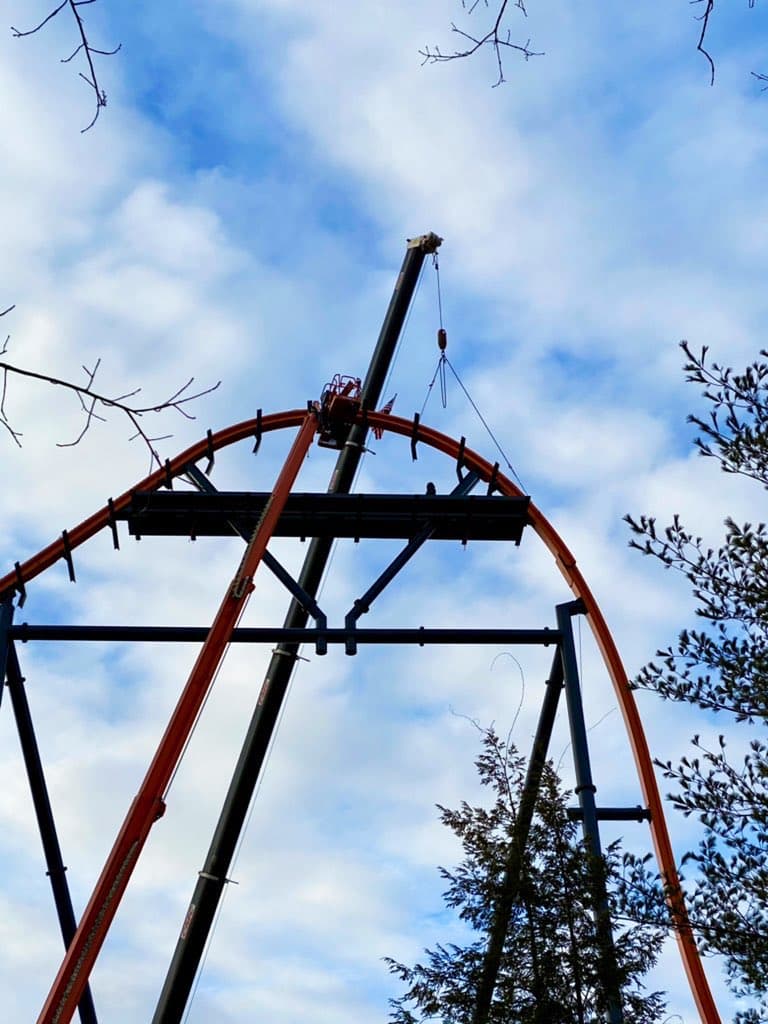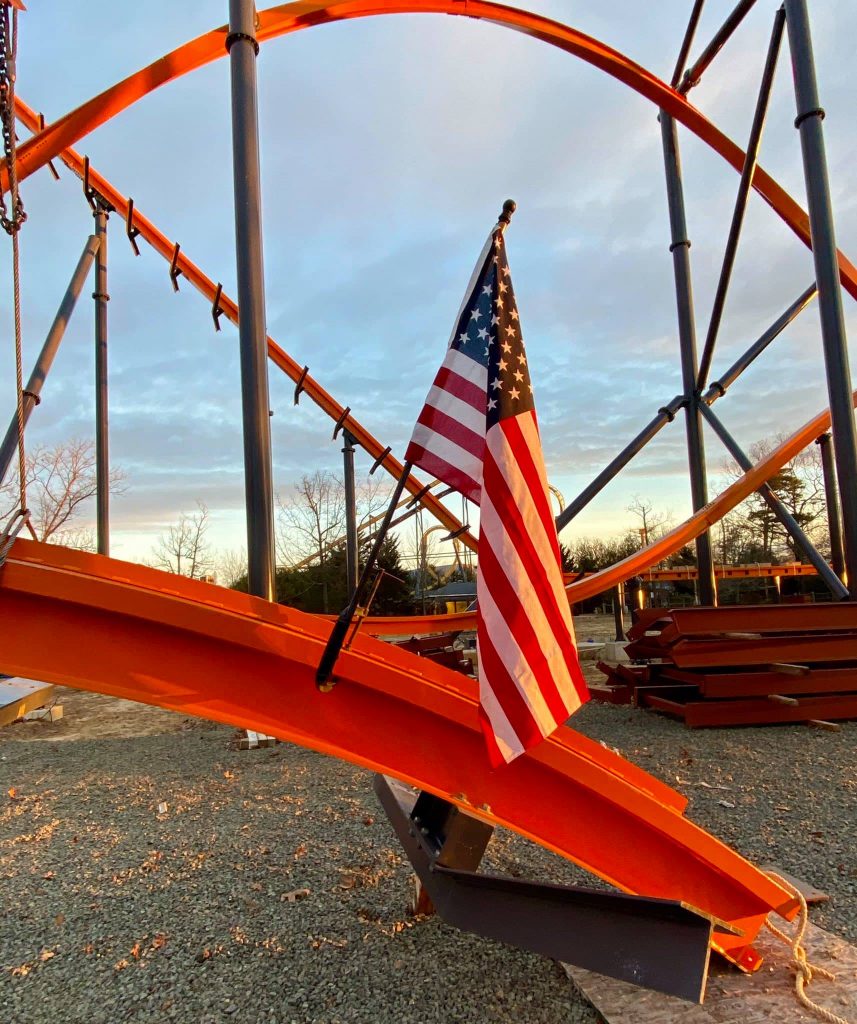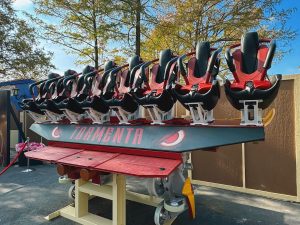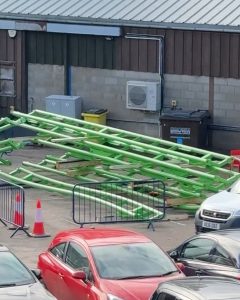Is Single Rail the next big thing when it comes to wowing thrill seekers across the globe?
When it comes to wowing thrill seekers and pleasing their audience ride manufacturers are constantly looking for the biggest and best new way to meet the demands of their audience.
In the last 10 years alone we have seen manufacturers go bigger, faster, taller and more thrilling than ever before as they have done their utmost to keep up to speed with an ever changing and evolving industry.
new additions across the world such as Steel Vengeance at Cedar Point in Sandusky, Ohio, Hyperion at EnergyLandia in Poland and Rail Blazer at California’s Great America are all testament to this.
As we edge ever further into a new world of thrills and adrenaline there does however appear to be one ride type in particular which seems to be increasing in popularity (particularly in the U.S.) and that’s the single rail roller coaster.
Why Single Rail?
Before we explore that further, let’s get something straight here! The concept of a single rail roller coaster is nothing new!
We can see this in particular by the fact Arrow Dynamics installed Steeplechase at Blackpool Pleasure Beach back in 1977, however why the comeback all of a sudden?
There is of course one reason (or rather one company in particular) that have in truth made this happen, and that’s RMC (Rocky Mountain Construction).
Since RMC debuted the revolutionary single rail IBOX (the name refers to the shape of the rail which resembles the letter I when looked at head on) track, parks across the US have jumped to secure their piece of the action with the first to open being Rail Blazer at California’s Great America (as far as we’re aware).
The new ride product name using this technology is the Raptor (and no, we’re not referring to Universal Orlando’s new addition here).
But what does the Raptor offer parks in the way of their investment, use of land and overall guest experience?
In truth, a lot!
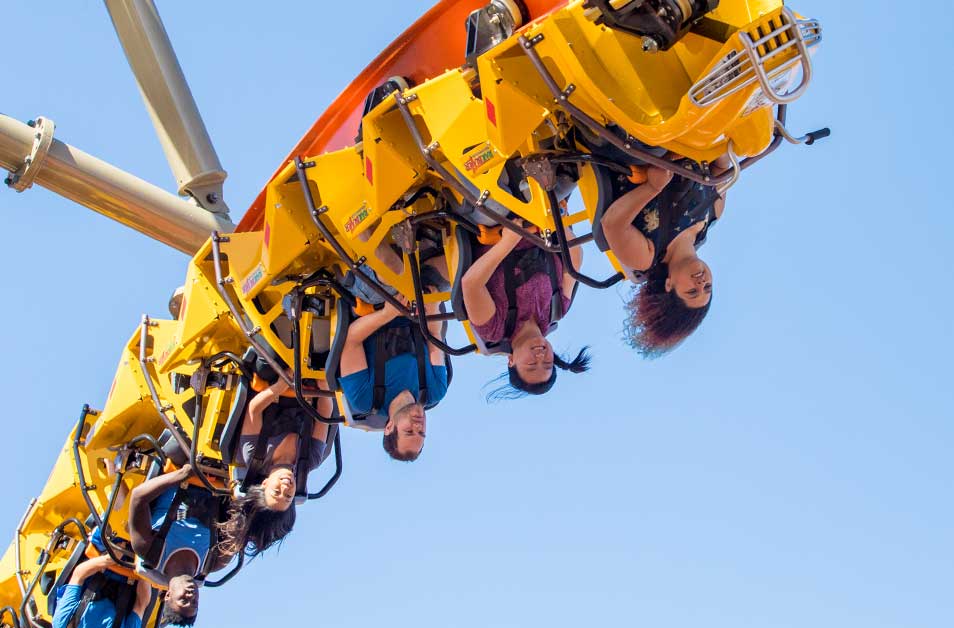
What's on Offer Here?
The Raptor offers the same thrills and excitement offered by much grander inverting roller coasters at the fraction of the cost, as well as a fraction of the space.
The average cost of a standard layout Raptor comes in at just $7 million which in comparison to the average cost of a huge thrill coaster at a minimum average of $15 million upwards is a huge saving!
The raptor also allows RMC to cram more thrills sand inversions into one layout than most manufacturer’s do into their much larger rides, and this of course is all down to space.
Due to this ride requiring a fairly minimal footprint and also the size of the ride’s envelop Rocky Mountain Construction are able to include the same level of thrills as any of their other much larger rides.
The size doesn’t detract from speed either!
Wonder Woman’s Golden Lasso at Six Flags Fiesta Texas has a top speed of 52 mph, and when you couple that with the amount of head choppers and near misses included due to space, well then, you’ve got yourselves a winner!
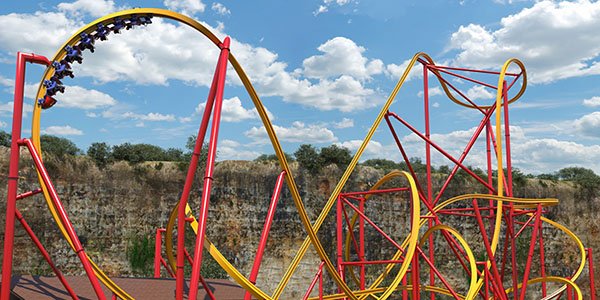
Single Railed to the future!
This year (2021) the American theme park industry is set to see the inclusion of a further two Raptors – Jersey Devil at Six Flags Great Adventure & Stunt Pilot at Silverwood Theme Park!
Stunt Pilot will be particularly special however as it will represent the first ever RMC coaster to be installed at the one park the companies founder Alan Schilke started out his career as a ride designer.
There is so much more potential here for Single Rail coasters however than just compact thrill rides!
Where as the Raptor only seats one rider per row (which is not really an advantage for through put), RMC’s larger single rail concept – the T-REX is said to seat 2 across per row and reach heights of up to and including 500 ft!
To date, the company have yet to officially roll out the T-REX model, however it’s safe to say that when that does eventually happen, this incredible new ride will be a true game changer.
Due to the exposed nature of the single rail concept a 500 ft tall single rail roller coaster is very likely to present a true challenge to even the most hardened thrill seekers out there.
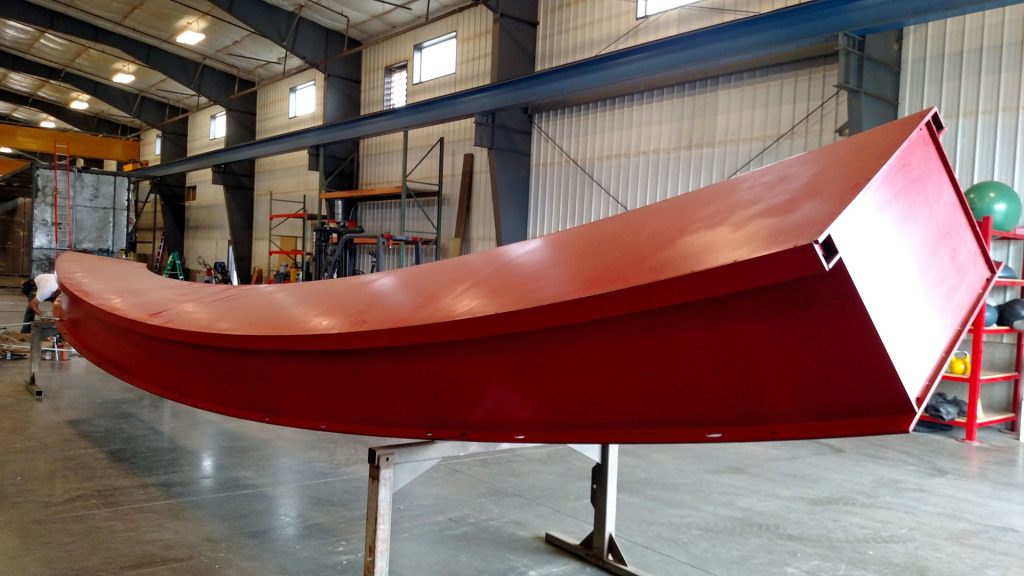
Shaping the future!
With so much potential it’s fair to say that the single rail roller coaster is only likely to increase in popularity as the years go by (especially internationally).
Indeed, this concept has now been picked up, refashioned and introduced a further ride manufacturer (Intamin) and this can be seen by the introduction of the world’s first ever launched single rail roller coaster at Luna Park, Sydney Australia (Big Dipper).
Therefore, when it comes to the future of the roller coaster, is single rail really the way forward?
It most certainly appears to be ONE way forward, however there is definitely still so much more offered by the standard rail roller coaster.
You only have to look at the brand new Intamin Blitz coaster Jurassic World VelociCoaster opening Universal Orlando Resort this Summer to see that!
In truth, the single rail concept is more than likely a ride that will (for the moment at least) be more desirable to the smaller, more independent theme parks within the industry.
However as the concept evolved and becomes more than it is at present, we can almost certainly see single rail taking the industry by storm, especially when you can hit the 500 ft mark with it!
What are your thoughts on single rail? Do you think this well loved ride type has a bright and prosperous future? Or do you feel it’s reached it’s potential and will never be anything more than it currently is?
What ever your thoughts, let us know in the comments below!
Thank you very much for reading.
